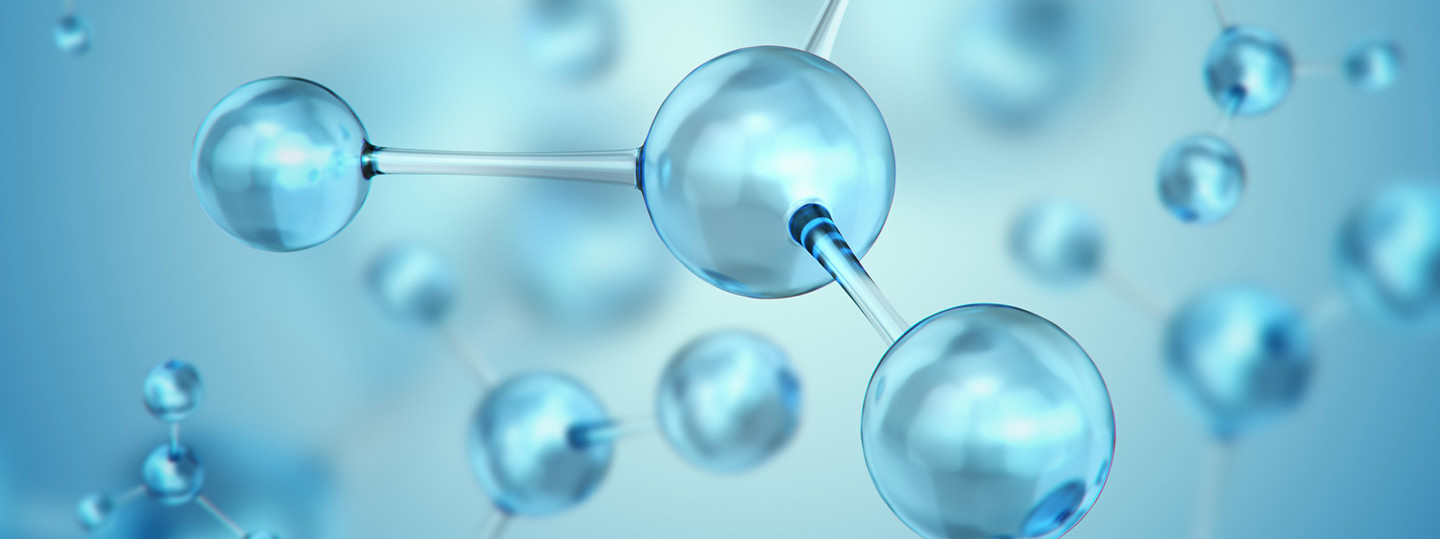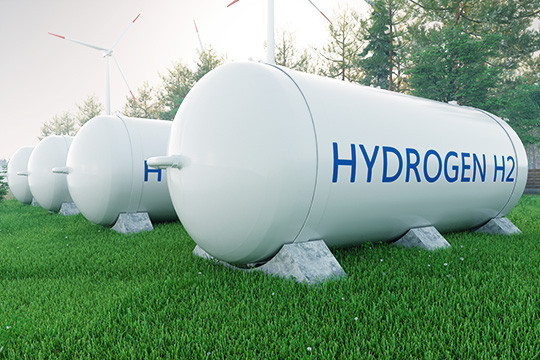
Hydrogen – Drivers on the Road to Climate Neutrality
Green hydrogen plays a central role in climate neutrality. Our claim at ENGIE Deutschland: We want to be at the forefront of the production of green hydrogen on an industrial scale. For this purpose, we work in the three development areas "Industrial Applications", "Mobility" and "Energy", develop innovative solutions, enter into partnerships and explore different technologies.
Your advantages through a partnership with ENGIE Deutschland
-
Competent team
ENGIE currently employs around 200 experts in the group who would be happy to support you in your hydrogen project. -
A wealth of experience
ENGIE is working on 70 hydrogen projects in over ten countries. -
Reliable Partner
Whether as an investor, developer, operator or marketer – ENGIE Deutschland is always the ideal contact for your hydrogen project.
With green hydrogen into a climate-neutral future
Green hydrogen is a key element for the energy transition. It is CO2-neutral, technically tested and flexible to use. Hydrogen can store large amounts of green energy with high energy density - a perfect complement to renewable energy. In addition, green hydrogen can be converted into many other products that would emit CO2 when manufactured in the traditional way.
The use of green hydrogen is particularly interesting for the decarbonization of industry and for sustainable mobility. And as fuel for modern power plants, hydrogen can become the backbone of our power supply in the long term.
At ENGIE Deutschland we are driving the production of green hydrogen on an industrial scale. Our objectives for 2030 are:
- 4 GW capacity for green hydrogen
- 700 km hydrogen networks
- 1 TWh storage capacity
- over 100 service stations in operation
We offer services along the entire value chain of green hydrogen
ENGIE Generation is a central power plant operator within the ENGIE Group and is one of the largest investors and owners of power plants worldwide. The business model: owning and operating plants. Depending on the project, we offer different operator models:
- Investing in H2 projects as a majority or minority partner:
- Planning and implementation of turnkey H2 projects: Operation and financing (off-balance sheet)
- H2 generation, transport, storage and distribution with provision of all services from one source
- Methanization and methanol production for the production of synthetic fuels, execution of the entire process chain including marketing
- Ammonia production for hydrogen transport and as input material for the chemical industry
Everything from a single source: ENGIE Generation is your investor for the entire infrastructure, your developer for the entire plant technology, your operator with its own staff and your marketer with customer relationships worldwide.
Our lighthouse projects for green hydrogen
In 2017, ENGIE joined forces with the Auvergne-Rhône-Alpes region, Michelin, the Banque des Territoires and Crédit Agricole to develop an integrated ecosystem for hydrogen mobility that combines production, storage and distribution infrastructure. Our goal: structure the hydrogen sector in the region and allow a growing number of green hydrogen vehicles at competitive prices. Zero Emission Valley is the leading renewable hydrogen mobility project in France for corporate fleets. The project, co-financed with European funds, is managed by ENGIE and its partners through the project company "Hympulsion".
Key figures:
- 3 Production controllers
- 20 petrol stations
- 1,200 green hydrogen light commercial vehicles
For more information about this project, see engie.com/en/business-case/engie-x-zero-emission-valley.
The HyNetherlands project, which was launched by ENGIE and Gasunie in 2019 and is due to start operations in 2025, aims to install a hydrogen hub in the strategically located region of Groningen (north of the Netherlands in the Eemshaven industrial area).
At the existing power plant site, ENGIE is planning to build in the first phase by 2025 an approx. 100 megawatts of electrolysis, one of the largest plants planned in Europe. At full load, the electrolyzer will have an output of approximately 20,000 standard cubic meters per hour. The expected production of hydrogen is therefore about 11,800 tons per year. The plant is operated with renewable electricity from offshore wind farms in the North Sea. ENGIE and its partner Gasunie will transport the hydrogen to nearby chemical plants, which use it as a raw material for decarbonizing their production. Hydrogen will also be used as a fuel for heavy commercial vehicles and local trains.
In the second construction phase a significant expansion of the capacity to approx. 750 megawatts of electrolysis is planned to produce green hydrogen for export as well.
In order to ensure the future viability of the site, it is planned to expand the installed capacities to up to one gigawatt of electrolysis in a third construction phase. This goal is to be achieved by the end of the 2030s.
Key figures:
- 100 MW electrolysis plant by 2025 with long-term expansion plan for 1 GW
- Start of production of 15 tons of renewable hydrogen per year from 2025
- By 2035, 2 million tons of CO2 will be avoided in the upstream production of hydrogen and oxygen.
For more information, see: engie.com/en/business-case/engie-x-hynetherlands
To reduce the CO2 footprint of its La Mède biorefinery in the south of France, ENGIE and TotalEnergies launched the "Masshylia" project. Masshylia will be the first French site for the production of renewable hydrogen on an industrial scale. Production should start as early as 2024 – an important step towards fulfilling France's ambitions for a low-carbon energy mix.
A 40MW electrolyzer will be installed at the site of TotalEnergies' biorefinery, which will draw electricity from, among other things, solar parks with a total capacity of more than 100 MW. An average of 15 tons of green hydrogen are to be produced every day to meet the plant's biofuel needs.
The project is groundbreaking in several ways: With large storage facilities and the implementation of an energy management system, it will solve the problem of fluctuating solar power production and ensure a continuous supply of hydrogen to the biorefinery. The project includes several photovoltaic parks that will optimize the power supply of the electrolyzer.
These innovations make Masshylia a unique European model for industrial decarbonization.
For more information, see: engie.com/en/business-case/engie-x-masshylia-france
The SaltHy project of our sister company Storengy Germany is linked to ENGIE's HyNetherlands project. Storengy is the world leader in the underground storage of natural gas. In Germany, the company operates three cavern storage facilities, including one near Hamburg. The aim is to store green hydrogen in a H2 cavern storage facility at this location and to transport it to local customers from the mobility and industry sectors. Storing the hydrogen in salt caverns offers flexibility to compensate for fluctuations in production and consumption. This project makes an important contribution to the development of a European H2 backbone. The hydrogen produced in the HyNetherlands project, which is to be transported to Hamburg via a pipeline, can be temporarily stored in the H2 cavern.
Key Facts:
- Storage and transport of green hydrogen
- Construction of a new cavern for 100% H2
- Around 36* million standard cubic meters of hydrogen can be stored at a depth of around 1,200* to 1,500* meters (* these are estimates)
You can find more information here: storengy.de/sites/default/files/mediateque/pdf/2021-10/SaltHy.pdf
Our sister company Storengy Germany launched its hydrogen solution for heavy goods traffic in 2021, including in waste management. Especially in waste logistics, a lot of energy is used for the collection, disposal and recycling of waste, which leads to the release of high emissions. The solution with hydrogen drive is conceived in an efficient cycle.
Key Facts:
- Production of renewable electricity in the waste-to-energy plant
- Conversion of renewable electricity into hydrogen using electrolysis
- Refueling of the hydrogen in waste vehicles
- Transport of the waste by the waste vehicles to the incinerator
Together with other ENGIE companies, the entire life cycle of a hydrogen project can be covered from a single source: investment, conceptual design, project development and contracting.
You can find more information at: storengy-h2.de
